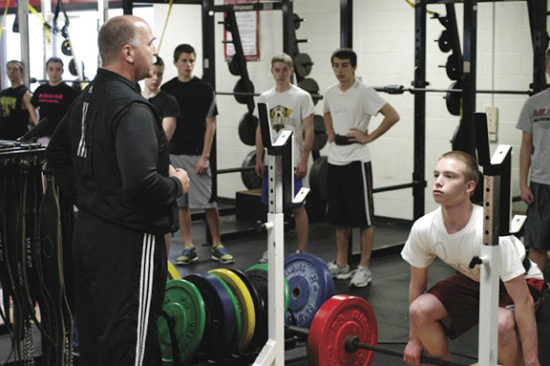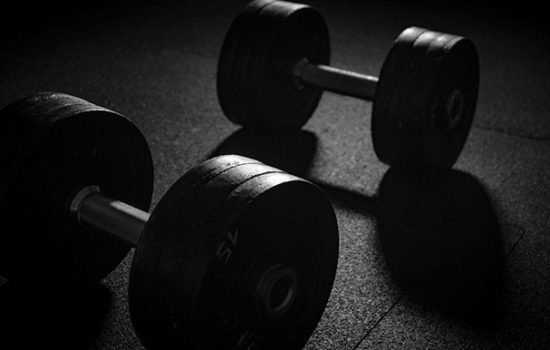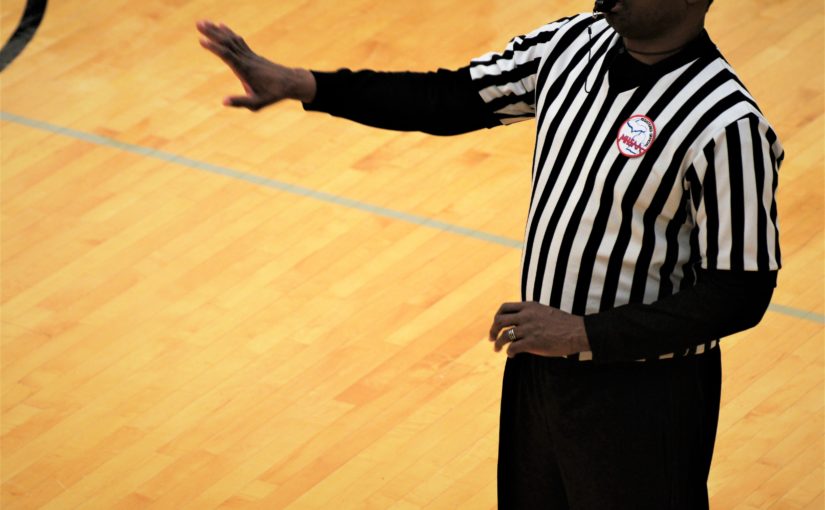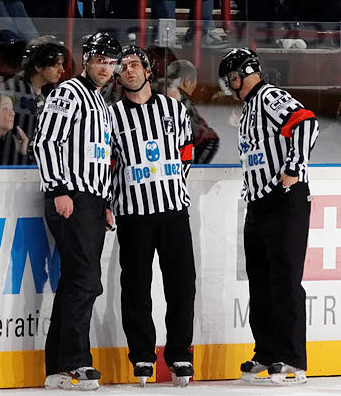Building a better athlete at Muskego High School
It’s early Monday morning and Mike Nitka sits patiently in his dimly lit office at Muskego High School (Wisconsin), waiting for his freshman human performance class to crowd the adjoining locker room.

“They got six minutes,” he says, glancing at a stopwatch banded to his left wrist. Nitka is the school’s strength and conditioning coach, though he prefers to be recognized as a physical education instructor.
Nitka begins describing what’s about to take place moments before his words play out with surgical precision. The young students pack the locker room, exuding a type of energy rarely seen at sunrise. Minutes later, they’re gathered in the gymnasium, awaiting Nitka’s instruction.These details might seem irrelevant to most, but not Nitka. When you’re given just 50 minutes to breeze through the day’s lesson, every second counts and every action has consequences.
“The joke is the administration gives me 50 minutes, not 51, so when the students show up, I’ve got to get the maximum from that time,” Nitka says. “For that to happen I have a semester syllabus with a daily lesson plan that’s in a rough outline form and everything is budgeted for, including change time, warm-ups and attendance.”
Because time is so valuable—not to mention scarce—Nitka spent years perfecting a system that maximized efficiency while challenging students and increasing their athletic abilities. Those efforts resulted in two human performance sections and an after-school Weight Club that’s grown to nearly 100 students.
It didn’t come easy, but that’s hard to believe watching Nitka at work. Using his stopwatch as the orchestrator, he seamlessly guides this class of about 30 freshmen through the day’s lesson, breaking with just enough time to let them change clothes and move on with the rest of their day.
“I try to get them to understand we need to win every workout if we expect to win the games,” Nitka says.
A new direction
The concept of human performance classes was born about six years ago, but brainstorming such an idea began much earlier. Nitka says he always believed students would benefit from curriculum more dedicated to strength and conditioning, but the plan hadn’t evolved just yet. He jokingly told administrators the school needed an “advanced placement physical education” course, much like AP science and history.
 Several years ago Nitka was elected chairman of a special interest group put together by the National Strength and Conditioning Association. While in that position he had the opportunity to hear from other strength and conditioning coaches throughout the nation, exposing him to a variety of styles and teaching methods. That laid the groundwork for the masterpiece he would later create.
Several years ago Nitka was elected chairman of a special interest group put together by the National Strength and Conditioning Association. While in that position he had the opportunity to hear from other strength and conditioning coaches throughout the nation, exposing him to a variety of styles and teaching methods. That laid the groundwork for the masterpiece he would later create.
“I was taking pieces of programs and stashing them away knowing that at some point in the future I think I was going to develop this human performance class,” Nitka says. “It happened because a lot of people around the country were sharing their ideas on what would happen if we could set up the perfect high school physical education class, and we’re getting pretty darn close to it.”
Previously Nitka’s physical educations classes were broken into three-week periods, but he aspired to create a 20-week program. Nitka admits he’s not necessarily trying to build a better athlete, though the majority of classes are made up of basketball, football or softball players. His main goal is teaching proper technique so his students can excel in any physical activities they undertake.
That doesn’t mean his instruction doesn’t carry over into the field of play. Nitka says years ago 5.1 or 5.2 seconds in the 40-yard dash was “Muskego fast.” Today more athletes reach 4.8.
“Coaches are buying in because we’re having some success,” he says. “I wish I could point out specifics — that’s subject to some interpretation — but are we stronger and are we quicker than the other team now? My answer is yes.”
On this particular Monday, Nitka’s group of freshmen is at the midpoint of the 20-week course. He’s already earned the students’ respect, indicated by the impassioned effort they give during their short time in the gym.
The students are put through various exercises, including slides and jumping chin-ups. There is no basketball or flag football—the main idea is developing physical abilities that eventually make better athletes.
Nitka transitions flawlessly from one drill to the next, accounting for his short time frame.
“My objective is to get the child fit first,” Nitka says. “As odd as that sounds, these children are incredibly skilled but they’re not athletes. … What I’m trying to do over four years is improve athleticism so they can compete in their specific sport.”
Supporting cast
Nitka spent nearly 35 years gathering the skills and crafting what he believes is the perfect program, but he says it’s possible for coaches undertaking the same project to do so in just three years. The first, and most important, ingredient you’ll need is support from your school.
 Nitka says he was fortunate to have the blessing from those around him to put his plan into action. Muskego High School associate principal John LaFleur, who Nitka calls one of his biggest supporters, says the human performance course is the most popular program among the students.
Nitka says he was fortunate to have the blessing from those around him to put his plan into action. Muskego High School associate principal John LaFleur, who Nitka calls one of his biggest supporters, says the human performance course is the most popular program among the students.
LaFleur met Nitka in 1996 at a Wisconsin NSCA workshop. He was immediately impressed with what Nitka was able to accomplish in a school of nearly 1,400 students and a weight training facility that was then the size of two small classrooms.
“Mike’s program is unique because he has chipped and chiseled away at a program that can take a large volume of athletes and run them through a worthwhile strength workout … and there is no time wasted,” LaFleur says. “Children want to be coached and they want to be active. Neither Mike nor I can stand the coaches that come in and (just) talk.”
Muskego’s strength and conditioning program has flourished in part because of the overwhelming support from administration. Nitka says they believed in his philosophy, allowing him to take the initiative in developing a model he thought would best fit high school students.
Without backing from those in the district, Nitka says it’s almost impossible to create a similar type of program. For those trying to do just that, he says it might be best to try and find a better situation.
“If there isn’t the support from the administration, don’t waste your time and look for another job,” Nitka says. “If what you want and what the administration wants are complete opposites it will not happen. When you go in for your job interview and they ask the question tell them honestly what you believe in at that time. And once they support you, that’s your ace in the hole.”
Having the blessing of your school administrators is key, but it’s also essential that coaches in the athletics department have similar goals. Nitka says the veteran coaches tend to be more accepting than those newer to the profession because most of them have backgrounds in physical education.
Despite those differences, Nitka manages to keep a constant line of communication between himself and coaches. He sends each of them a letter, explaining what he’s doing and how it’ll help the students develop physically. Because his methods have earned such high praise, most welcome what he does and are eager to get involved.
“I’m the old guy on staff with longevity and the new coaches come in and say, ‘I hear you got something nice going on, how can I be part of it,’” Nitka says. “Once I get them, now I have to set the hook and get them to be there (physically developing their athletes) year round.”
LaFleur says the most notable gains throughout the school are with the female athletes. Coaches aren’t experiencing the same types of injuries they had in the past, and the girls can endure more because their bodies are equipped to handle the pressure.
“The new coaches that have enough horse sense to listen are humbled and relieved as a result,” LaFleur says of Nitka’s program. “They are humbled by how much Mike knows the children and by how well he fits the strength work into the sport work in synchronicity.”
Changing the culture
It’s shortly after 2:30 p.m. on a Thursday and classes at Muskego High School have just ended for the day. Students are free to head home or spend the remaining afternoon with their friends. Most do, but others voluntarily stick around for another hour to take part in Nitka’s “Weight Club,” offering dedicated students a more intense version of what takes place in his human performance classes.
The biggest difference is this is no traditional “class.” Nitka provides no grades or evaluations forms, and much like the students, he’s voluntarily staying after school to take part in what he calls “organized chaos at its finest.”
“The first week is crazy and by the second week everybody figures it out,” he says. “I don’t mind staying after school because this is not work to me. I get to watch every one of these students grow for four years.”
The makeup of Weight Club is similar to human performance but its not strictly juniors or sophomores. Scrawny freshmen stand side-by-side with chiseled seniors, both sharing the common goal of expanding their physical limits.
Nitka, joined by his assistant, begins the class with a short series of sprints and slides; similar to those any young athlete would endure during basketball or football practices. They then head into the weight room, where they break into smaller groups for bench presses, squats or dead lifts. Each group gets seven minutes at their stations before rotating to the next workout.
Each student tracks his or her own progress. Nitka is there to supervise and give direction to those using improper techniques.
“I sincerely want them to succeed in here so they can succeed in their respective sports,” Nitka says. The 12-week session is broken into four-week tiers and the students are subjected to varying levels of difficulty throughout.
“I’m very proud of our program.”
The administration at Muskego High School feels the same, both about Nitka’s innovative efforts and the way he’s changed the culture of physical education. It’s a benefit they expect to pay dividends for years to come.
“Mike can rally the troops when he needs to get something done for the students,” LaFleur says. The school’s weight room was expanded five times and Nitka continues to find ways to improve the school’s physical education facilities without cost to the district.
“The alumni and parents have supported his program over the years. The community supports what they see works to make students better. Mike has put a lot of his own blood, sweat and tears into the program … He got it done and it was like standing next to a proud father gazing at his newborn in the maternity room at the hospital.”





